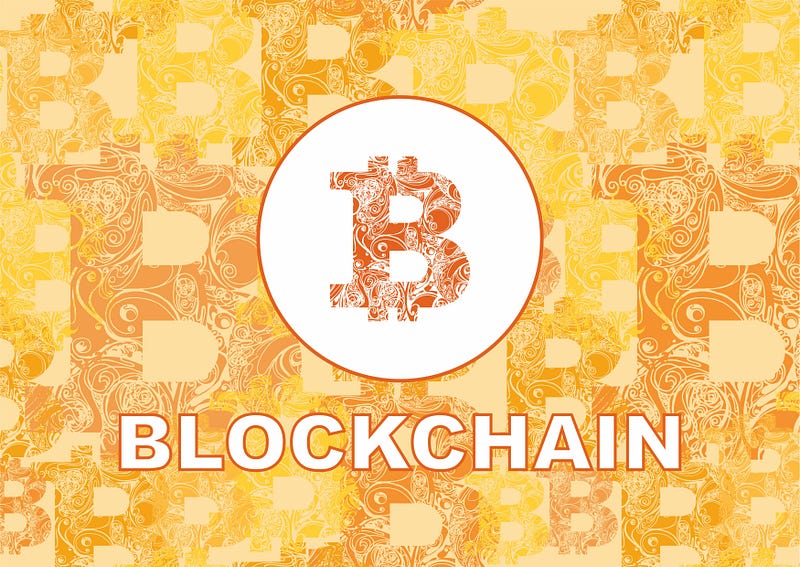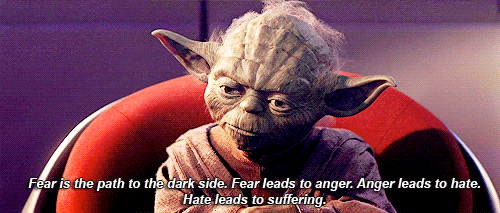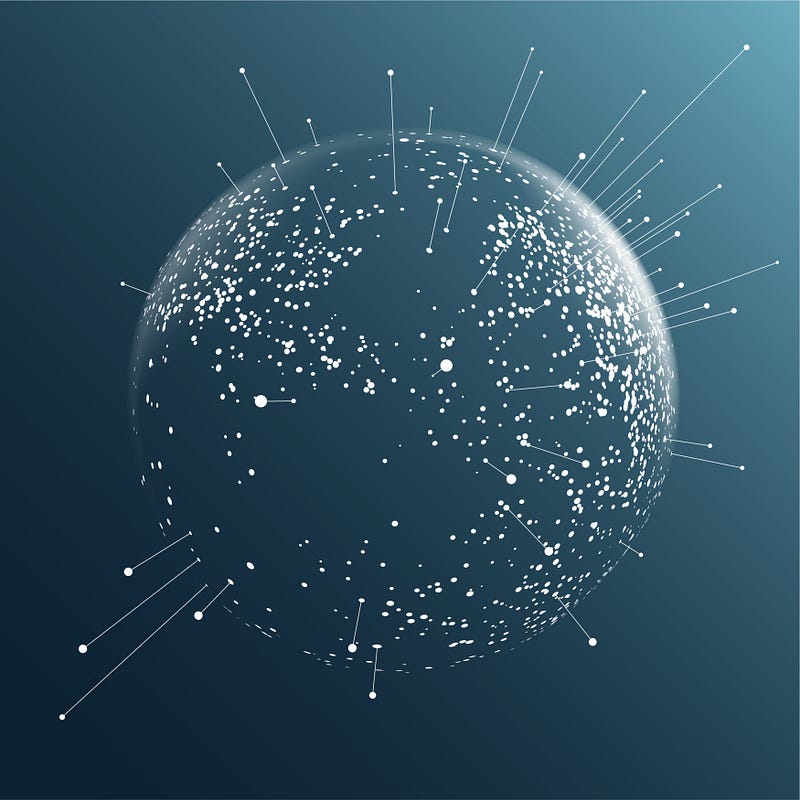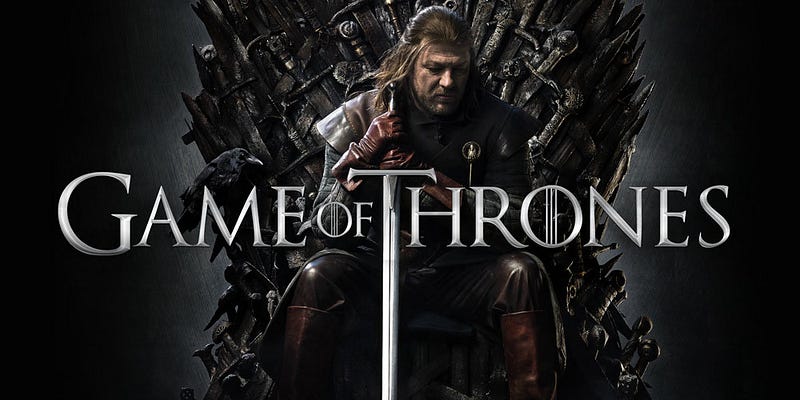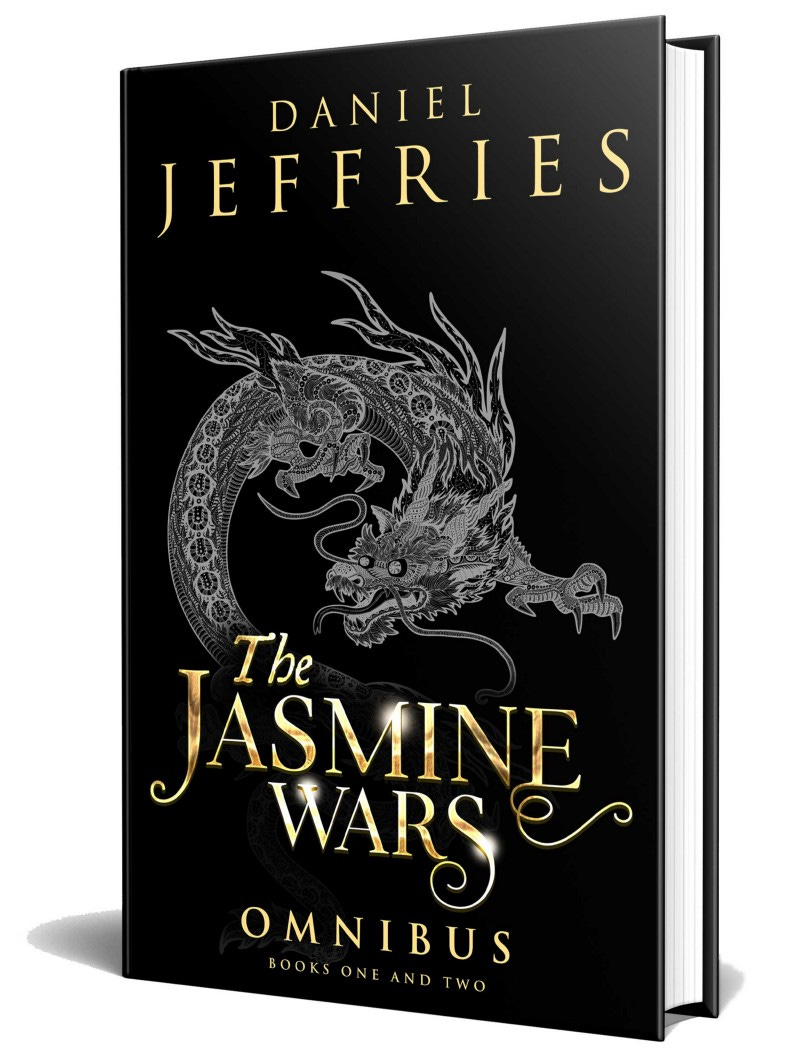Reflections on the Best Blockchain Tweets Ever Written
If you don’t know Naval Ravikant, you should. When it comes to investing, he’s the best of the best. He’s backed over a 100 companies…
If you don’t know Naval Ravikant, you should. When it comes to investing, he’s the best of the best. He’s backed over a 100 companies, including tech unicorns that went on to become runaway successes, like Twitter and Uber. He also founded AngelList, a kind of speed-dating resource for angel investors and entrepreneurs.
But that’s not really enough for me to give the man much credit. Unlike a lot of folks, I’m not dazzled by success. You can be successful and be an idiot. As Eckhart Tolle once said “You don’t have to be smart to make money, you just have to be clever.”
But Ravikant is smart.
And not just because his top books list matches up pretty closely with some of my favorites.
I’ve probably read Siddhartha (Hilda Rosner translation) about twenty times in my life. If you’re surprised to see a bunch spiritual and philosophical books on an angel investor’s list, that should be your first clue that you’re in the presence of a unique mind. Most of the business school bros I knew at NYU thought Ayn Rand’s The Fountainhead was the only book ever written.
Flip through Ravikant’s Twitter feed or listen to this interview and you’ll quickly realize that more than anything the man knows how to think. Critical thinking is the most essential skill for today and tomorrow’s world.
Most recently he’s been thinking about blockchain (along with the two other technologies that I see as the most world-changing, CRISPR and AI). A few weeks back he dropped an epic series of 36 tweets on blockchain and the markets of tomorrow. They’re destined to go down as classics. I’ve already read them dozens of times and I will read them dozens more. Every time I look at them they deliver deeper insights.
They’re a fractal that seems to go down forever.
There’s no way he tossed them out off-the-cuff. And if he did, God bless him, he’s even smarter than I thought. But I doubt it. It’s obvious they represent the crystal clear distillation of years of thinking about what the blockchain means for societies and the world.
The blockchain revolution is coming like a tsunami that will remake every aspect of society but most folks don’t see it yet. That’s because their true impact is still to come. People often struggle to understand breakthrough technologies because they have no frame of reference for it. Imagine describing a web browser to an 18th century farmer. It won’t even begin to make any sense.
To this day, even many of the brilliant people I admire look at Bitcoin and cryptocurrencies as:
a Ponzi scheme
a tulip craze
an evil plot by Libertarians to take over the world
a drug dealer currency
nerd money
Crypto coverage in the popular press is generally atrocious (it’s been declared dead about a 1000 times even as it continues to grow and thrive), though it’s getting better inch by inch. I did my best to knock down most of those arguments in my article “Why Everyone Missed the Most Important Invention in the Last 500 Years” but of course most people don’t let logic get in the way of a good knee-jerk reaction. In the end, cryptos and blockchains will need to follow an old writer’s maxim to prove themselves to the world:
Show don’t tell.
In other words, they’ll have to start powering things other than day-trading for regular folks to get it. That’s coming. But until blockchain’s “Mozilla moment”, when it becomes so easy that grandma can use it, we’ll just have to gaze into our crystal balls to figure out where things are going.
And that’s what Naval’s tweets are about. Where this is all going.
We’ll start at the beginning:
What the heck does he mean here? To understand that, you have to understand what he means by networks.
The dictionary defines a network as “a group or system of interconnected people or things.” Other definitions include, “any net like combination of filaments, lines, veins, passages.” There’s also the idea of a “systems perspective” which is “taking into account all of the behaviors of a system as a whole in the context of its environment.”
But really, a network is a metapattern. It’s a web of connections across space, time and mind.
Think of the crisscrossing streets in a big city or the maze of sewers under those streets. Your nervous system and the densely packed dendritic forest in your head are all networks, as are the winding rivers that surge across the land like the arteries of the Earth.
But networks aren’t just physical things. They’re “physical, digital, and mental roads connecting us all.” That means that seen from a different angle, almost everything is a network, from the tangled web of belief systems in our minds, to the verbal interplay of ideas between different people, to the way money and energy and waves of digital information flow around our planet.
“Overlapping networks create and organize our society…Money is a network. Religion is a network. A corporation is a network. Roads are a network. Electricity is a network.”
Some of these are obvious and some not so much. Roads are easy but a corporation? That’s a network of people all working towards a common goal. Religion? That’s a web of people united by common beliefs.
The world evolves through the push and pull of these different groups. People with common belief systems cluster together, forming complex chains of influence, economic and military power. The tribes and clans of early man never left us, they just expanded outward like ripples in a pond, becoming more intricate.
These mega-clans battle it out with each other in an all-out bid to expand. As they convert more people to their way of seeing the universe, their web of influence grows. Each person they add increases their power.
“Networks have ‘network effects.’ Adding a new participant increases the value of the network for all existing participants. Network effects thus create a winner-take-all dynamic. And the Rulers of these networks become the most powerful people in society.”
The more they expand, the more they shape the very fabric of reality. “The leading network tends towards becoming the only network.” Their network becomes the network we all live and work in. If that network is good, then life is good. If that network is evil then life is miserable and filled with suffering.
But how do we get to a good or bad network?
Simple. There are two ways to achieve network dominance:
Violence and control
Openness and meritocracy
If you look closely, you’ll see two very different belief systems at work here.
One is a dark reality. Rage and anger are the guiding emotions. These belief systems see rigid hierarchies as paramount. Only certain people should control what everyone else does. Adherents to this philosophy worship status and power. Violence is their primary weapon.
On the flip side of the coin, good networks are “open and meritocratic.” They are collaborative and inclusive. The best ideas win and they can come from anywhere. Class and hierarchy melt away and the ideal approach shines through and gets adopted by the network as a whole. This is a pragmatic philosophy, one that never seeks a fight, but will finish one if forced into it.
The battle between these philosophies is eternal.
Closed is darkness.
Openness is light.
The history of the world is a war between closed and open, between centralized and decentralized, between rigid and fluid.
The pendulum swings back and forth, forever and ever.
In North Korea, a powerful strongman seizes control and creates a closed system that warps reality into a sickening nightmare of fear and terror. In another part of the world, in an earlier age, the students of English Enlightenment philosophers toss tea into the sea and start an open system revolution that leads them to become the most powerful nation on Earth two hundred years later.
These are not coincidences. They are fixed, deterministic results, as inevitable as night and day. Closed leads to decay and death, while open leads to growth and expansion.
Each of these philosophies has branching possibilities that spring directly from their starting viewpoint.
Some paths open up and some are absolutely closed off.
For example, a violent regime is never creative other than in the use of torture and fear. The creative branch withers and dies. The possibilities close up like sealed doors. That’s why North Korea delivers no new innovation to the world, no new ideas, no products. North Korea’s only “creativity” is with genocide, as they wipe out three generations of a family for even the slightest perceived insult. Instead, their focus is turned inward, paranoid, dark, constrained, like a tree bound with ropes that forces it to grow stunted.
Every possibility is connected to the one before it like beads on a string.
As Yoda said, “Fear leads to anger. Anger leads to hate. Hate leads to suffering.”
Over time these branching paths expand ever outward, breeding either more despair or more joy and freedom. An object in motion tends to stay in motion. It either continues towards darkness and decay, or grows and flourishes, stretching to the light.
Unless it’s disrupted.
Disruption leads to change and new possibilities.
The Coming Rebirth
We need disruption now more than ever.
For fifty years, the world has trended towards more and more centralization, control and inequality. The pendulum has swung too far. Now even networks that started out as open and meritocratic are starting to decay. They are over-centralized and overspecialized.
“Overspecialize and you breed in weakness. It’s slow death.” — Ghost in the Shell
We’re seeing this on so many parts of the planet right now, as democratic nations give way to plutocracies and kleptocracies or outright authoritarian regimes, like in Turkey and the Philippines. These nations fall apart through mismanagement, insane economic policies, corruption, and warped views of reality, as we’ve seen in Venezuela, where the worst people come to power, make terrible decisions and burn their own house down with everyone in it.
What causes one system to fail and another to succeed?
Belief systems.
Your beliefs determine your reality.
“Your beliefs become your thoughts,
Your thoughts become your words,
Your words become your actions,
Your actions become your habits,
Your habits become your values,
Your values become your destiny.”
— Gandhi
Every belief system thinks it has a complete picture of the truth.
None of them do. Not yours or mine or anyone else’s.
Instead we’re only moving closer to the Truth or further away from it. If we refuse to see what is right in front of us, our decisions can only fail because they started from a false premise. False beginnings lead to false endings.
Each person and each group is like a point on a sphere, limited by what we can see from our particular angle, but imagining that we can see the whole sphere.
The degree to which groups see reality as it actually is versus how they imagine it to be determines their level of suffering.
If two groups have different dreams of reality, who wins?
How do we decide?
One of the most powerful systems we’ve ever created is the marketplace. If I think I have a good or service people want, that is my belief system. It may be correct or incorrect. My product may be fantastic or terrible.
Either way the market will let me know. If nobody buys it, I’m likely doing something wrong. Maybe I’m not selling it right or maybe the product just isn’t that good after all and I need to go back to work to improve it?
Markets are imperfect but they’re constantly adjusting towards better and better answers, inching towards the truth. The best answers increase the wealth and value of the entire system, as well as the individuals. Players in the game work towards a positive Nash equilibrium, as detailed in the book and movie A Beautiful Mind.
Eventually the market gets it “right.” The world may ignore the genius of Van Gogh in his lifetime, only to later realize just how incredible those swirling strokes of green and gold are and respond by shoveling out millions of dollars for each painting.
Throughout history markets and networks were related but separate. Markets were nothing but a kind of network. They did little more than act as a way to exchange goods and services. The true power lay in the power of the clan, in the power of violence, coercion and scarcity.
Until now.
Today the era of violent clans is rapidly coming to a close because of a brand new kind of marketplace:
“Market networks. Open AND meritocratic.”
Blockchains fuse the market and network into a brilliant, hybrid system.
“Blockchains are a new invention that allows meritorious participants in an open network to govern without a ruler and without money. They are merit-based, tamper-proof, open, voting systems. The meritorious are those who work to advance the network. As society gives you money for giving society what it wants, blockchains give you coins for giving the network what it wants.”
These coins demand different kinds of work. Each blockchain has its own purpose. For example, “Bitcoin pays for securing the ledger. Ethereum pays for (executing and verifying) computation.”
The chains often espouse a UNIX-like philosophy of “doing one thing only and hence one thing well,” instead of trying to do fifty things and sucking at all of them. As the market-network evolves, we will see increasingly specialized networks, ones that do distributed, tamper-proof storage well, others that handle decentralized identities, another that executes smart contracts and more advanced legal frameworks, etc.
But these networks will work far more efficiently than our current systems.
In today’s specialized networks power becomes concentrated in the hands of a few warlords, who become increasingly powerful and cut off from the hopes and dreams of the rest of the world. Eventually greed and stupidity lead them astray and they look to rig the game in their favor by backdooring and crippling the network. When one viewpoint manages to dominate all the rest, society begins to decay and collapse. The system becomes intolerable for the rest and eventually erupts.
But decentralized blockchain systems can withstand attempts by hostile actors to corrupt them, to warp them to their own limited reality viewpoint. That’s because no one group of belief systems controls the keys to the kingdom. Instead, every participant in the network holds the keys, effectively distributing power across the entire system.
That leads to a new dynamic:
Competing groups must cooperate to reach consensus or they crash the whole system and they all suffer.
Contrast that to today’s world, where a system can be rigged by a single powerful group, and because they have no empathy for other groups than themselves (a characteristic of clan-think), they do tremendous damage to the whole, causing widespread suffering, all while imagining they’re doing good.
We see that with the modern banking system. The banking system holds all the money and makes all the rules. They buy the influence and bend the rules of the commonwealth to their will. If they have their way, they’ll build crippled blockchains they control, so they can continue to arbitrarily change the rules of the game to their advantage. These are elite and mob controlled blockchains: in short, broken and useless blockchains that are not blockchains at all.
“It’s nonsensical to have a blockchain controlled by a sovereign, a corporation, an elite, or a mob.”
The reason is simple. Only when the bankers, the bank shareholders, the bank deposit holders and the regulators simultaneously hold the keys can we achieve true equilibrium. Because we all have divergent interests, different belief systems, and different pieces of the puzzle, we will have to come to an agreement that benefits the whole system or we crash it. And since nobody wants to crash the whole system, because we’ll lose everything, we’ll find a way to come to an agreement, against all odds.
This is a bit like how Satoshi describe the “51% problem” in the original Bitcoin paper. If a miner or group of miners achieves 51% of the mining power they can’t change historical transactions, but they can alter and reject current transactions. Yet Satoshi wisely saw this as a non-issue. If anyone actually commits the massive amount of time and money to build up that much mining power, they benefit much more from keeping the system running smoothly. By cheating the system, they make a tiny gain but undermine confidence in the system as a whole, which tanks the market and makes all their time and money spent worthless.
Nobody wants to burn up all of that “frozen and trade-able time” so their energy is channeled from destructive behavior into behavior that benefits the entire system and keeps it running smoothly.
The Fractal Universe
The possibilities of blockchains are endless, from transparent end to end verifiable voting, to stock and share issuance, “to security, computation, prediction, attention, bandwidth, power, storage, distribution, content” and more.
I won’t go into all the specifics here, because I’ve already done that in a number of other articles that you can check out, if you like, but needless to say:
Over time the possibilities will only expand and flourish, rippling into every aspect of life. Blockchains will spawn a burgeoning ecosystem of micro-economies stacked on micro-economies, connected in infinite regress by larger meta-chains.
And that will change the world.
Today our networks are governed by “kings, priests, elites, corporations and mobs.” Think of it as a game of thrones. It’s a dark and brutal game.
Blockchains flip that dynamic on its head forever. They will dramatically change the balance of power on the planet for the better.
The power of decentralization will start small and grow exponentially, following Kurzweil’s “law of accelerating returns.”
The transition will be bumpy and shocking to many.
It may even be nasty, as dying clans struggle to hold-on to the past at all costs. But eventually, they will pass into the pages of history like the Trilobites.
And when it’s all over, nobody will mourn the loss of the old, broken, decaying, power hungry and violent networks of kings, queens, mobs, and corporations.
############################################
If you love my work please do me the honor of visiting my Patreon page because that’s how we change the future together. Help me disconnect from the Matrix and I’ll repay your generosity a hundred fold by focusing all my time and energy on writing, research and delivering amazing content for you and world.
###########################################
If you love the crypto space as much as I do, come on over and join DecStack, the Virtual Co-Working Spot for CryptoCurrency and Decentralized App Projects, where you can rub elbows with multiple projects. It’s totally free forever. Just come on in and socialize, work together, share code and ideas. Make your ideas better through feedback. Find new friends. Meet your new family.
############################################
If you enjoyed this article, I’d love it if you could hit the little heart to recommend it to others. After that please feel free email the article off to a friend! Thanks much.
###########################################
A bit about me: I’m an author, engineer and serial entrepreneur. During the last two decades, I’ve covered a broad range of tech from Linux to virtualization and containers.
You can check out my latest novel,an epic Chinese sci-fi civil war saga where China throws off the chains of communism and becomes the world’s first direct democracy, running a highly advanced, artificially intelligent decentralized app platform with no leaders.
